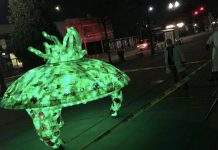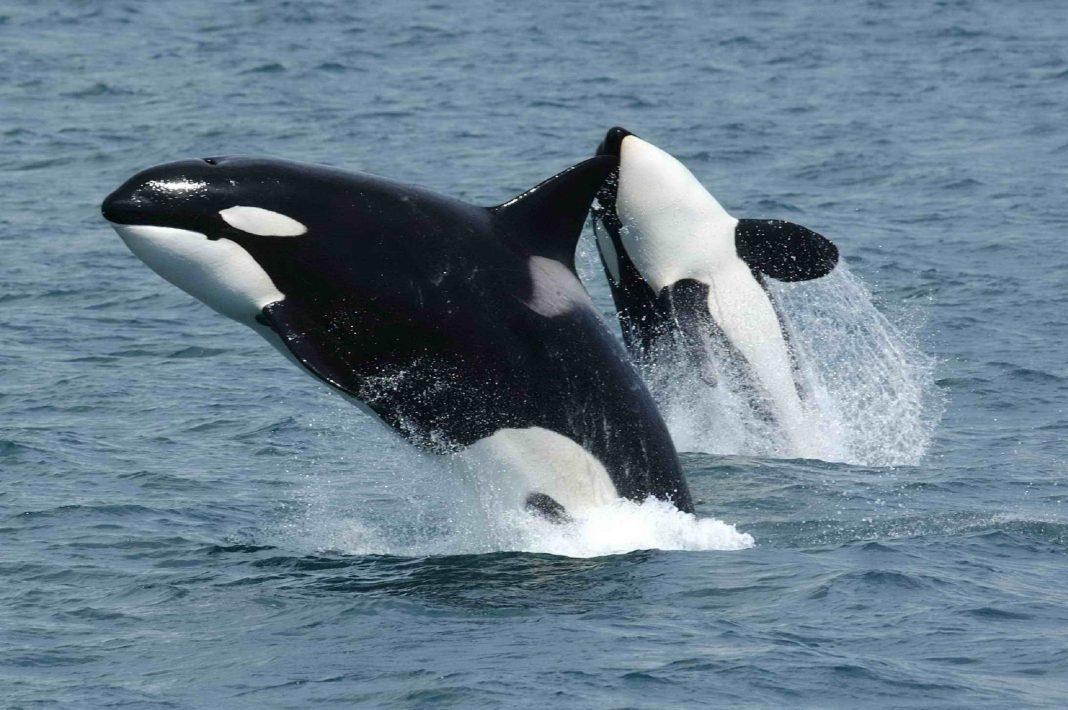Images and references of whales dot Puget Sound so much that outsiders might think these majestic dwellers of the waters swim past every street-lined waterfront.
While it might not be easy to see them, sighting a whale or two is not as complicated as one might think. It just takes a little planning, some patience, and, sure, a little luck to see Ocas, Humpbacks, Minkes, or Gray whales in the South Sound.
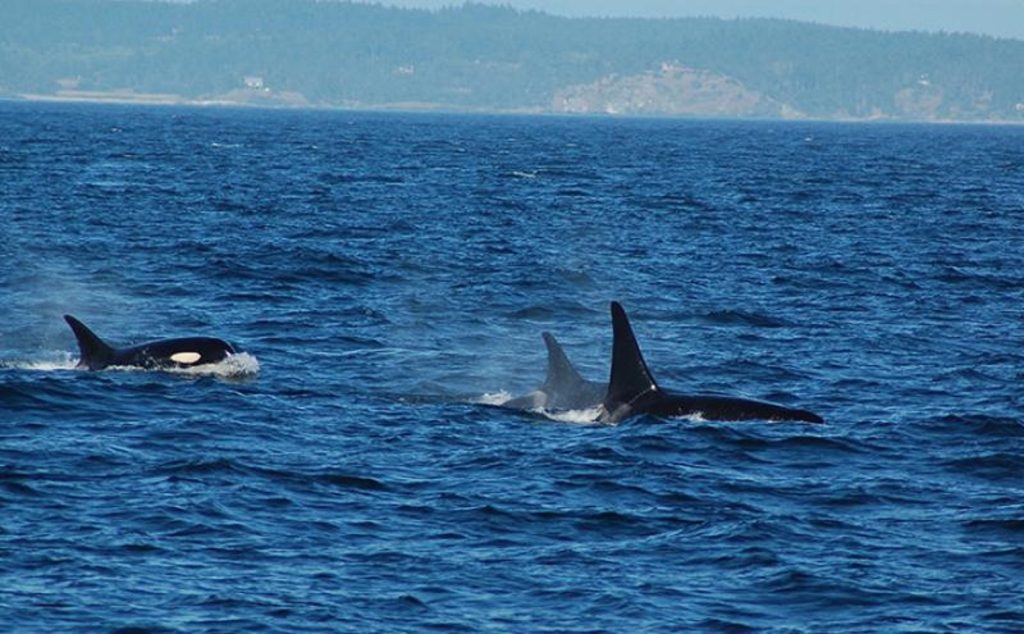
Find South Sound Whales on Your Own
To do it yourself, the first step is to gather everything you would need for a day in nature — water, snacks, sunscreen, weather-appropriate clothing, binoculars, a camera, and such. The next step should be to check the Orca Network’s Whale Sighting and Education Project for the latest sighting reports and information. The network’s social media has updated several times a day, more often than not, on all sorts of whale locations and directions. It’s just a matter of picking a spot and wishing yourself luck. Particularly popular sighting areas include the Dalco Passage viewpoint and Owen Beach at Point Defiance Park, but also Steilacoom’s Sunnyside and Saltar’s Point beaches, and even the beach at the end of Sequalitchew Creek, and the Nisqually Reach Nature Center along the Thurston-Pierce County border.
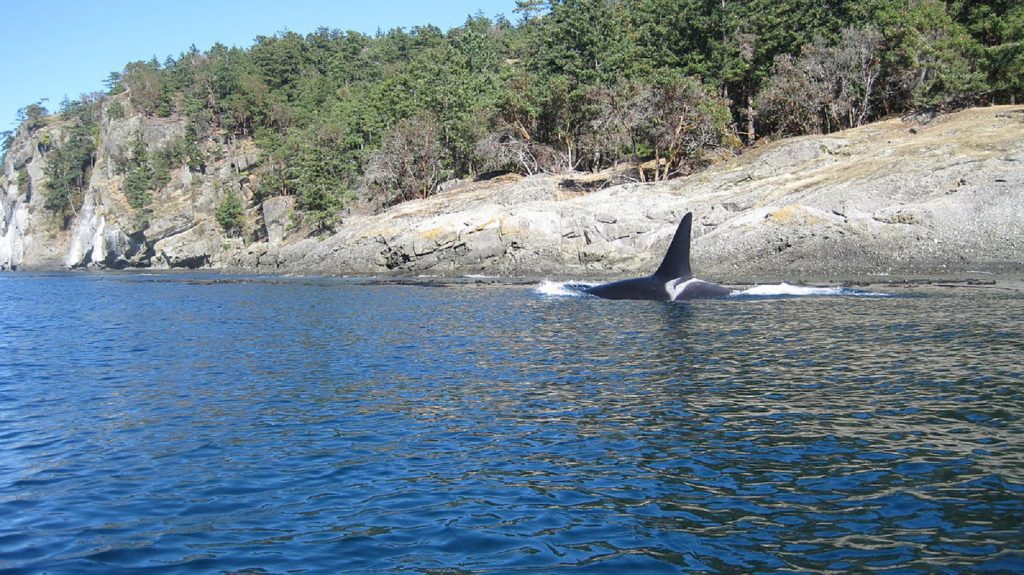
Just remember that while there can be between 50 and 100 Orca whale sightings throughout the Salish Sea during the spring and fall months, whales can travel the length of the Sound in a day as fast as 35 miles per hour. That means they might have moved on from their last sighting location. But Gray whales can reliably be spotted from late winter into mid-summer and generally lumber through the water.
So, check the latest sightings news, pick a spot, and wait. Keep in mind that those in the know believe cloudy weather is the best for whale watching since slightly gray skies mean people can see further, making it easier to see when whales breach the surface of the waves.
If your watching spot happens to be near a ferry lane, watch what they do, local whale watcher Morgan Dale shares. Ferries routinely stop to let the whales pass by rather than risk getting too close and running afoul of maritime rules. But even all the preparations don’t guarantee success.
“I wouldn’t say it’s low odds, but they’re not great unless you are really looking,” Dale said. “You just have to be at the right place at the right time.
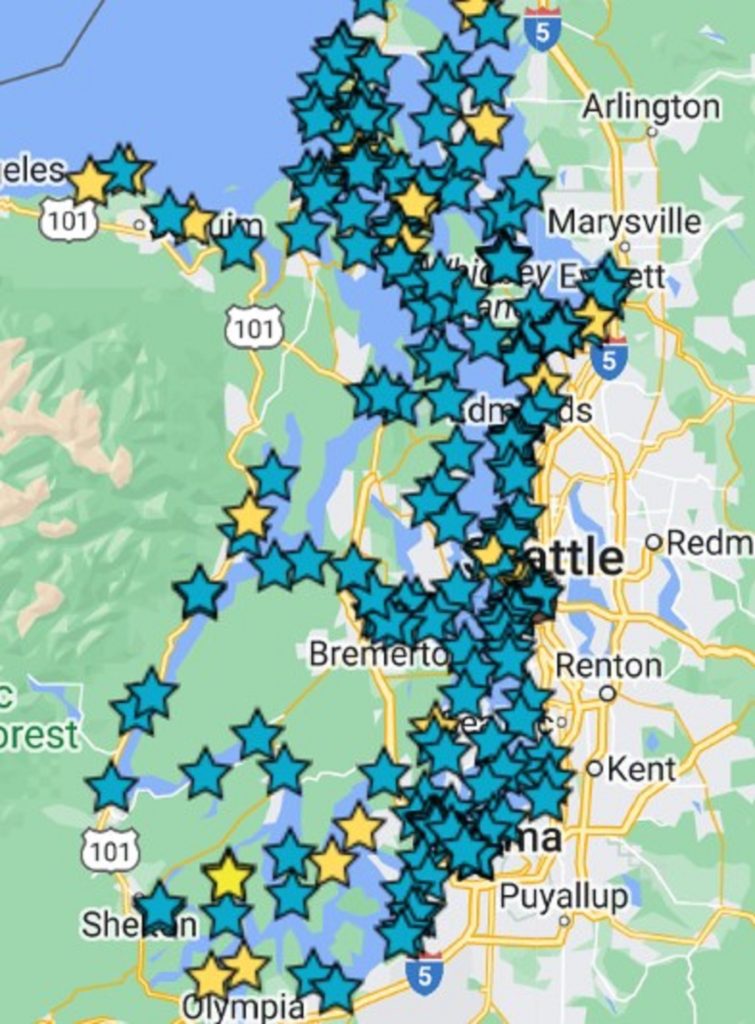
Learn More About South Sound’s Whales
During the downtime on your whale sighting outing, you can certainly read up about the whales of Puget Sound and learn all about the Southern Resident Orcas, which are social creatures who live in extended family units called pods. An older matriarch leads a pod that usually includes children, grandchildren, nieces, and nephews who travel together and communicate using unique dialects (clicking, whistles, calls) that can be easily identified. Yes, they have whale versions of regional accents. The Southern Resident orca community has three pods: J, K, and L, comprising about 75 members collectively. All resident whales share around 30 common calls, but each pod uses variations of those calls specific to that ground, much like a regional accent in humans.
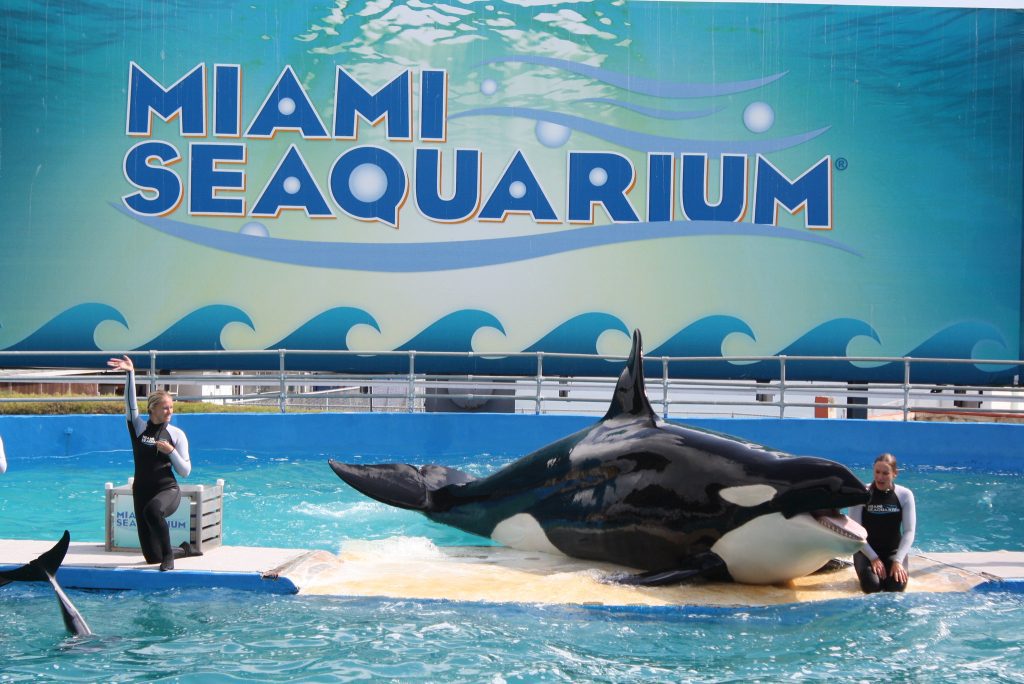
Think of the stories they could tell in those accents for a moment if only we spoke their language. At least one of the Orcas has a harrowing tale of capture, imprisonment and now retirement back home. Known by her stage name of Lolita, a female Orca from the Southern Resident Orca community was captured at the age of four from the Salish Sea in the 1970s and then performed at the Miami Seaquarium for the last 50 years. But in early 2023, it was announced that she will return to a semi-wild sea pen to live out the rest of her life under her traditional name Tokitae, or Sk’aliCh’elh-tenaut (SKAH-lee CHUCK-ten-NUT), by members of the Lummi Nation. The plan will take upward of two years at a cost of about $20 million, which will be privately funded.
So now get out and have some fun looking for, and hopefully at, a king of the ocean in South Sound.

















